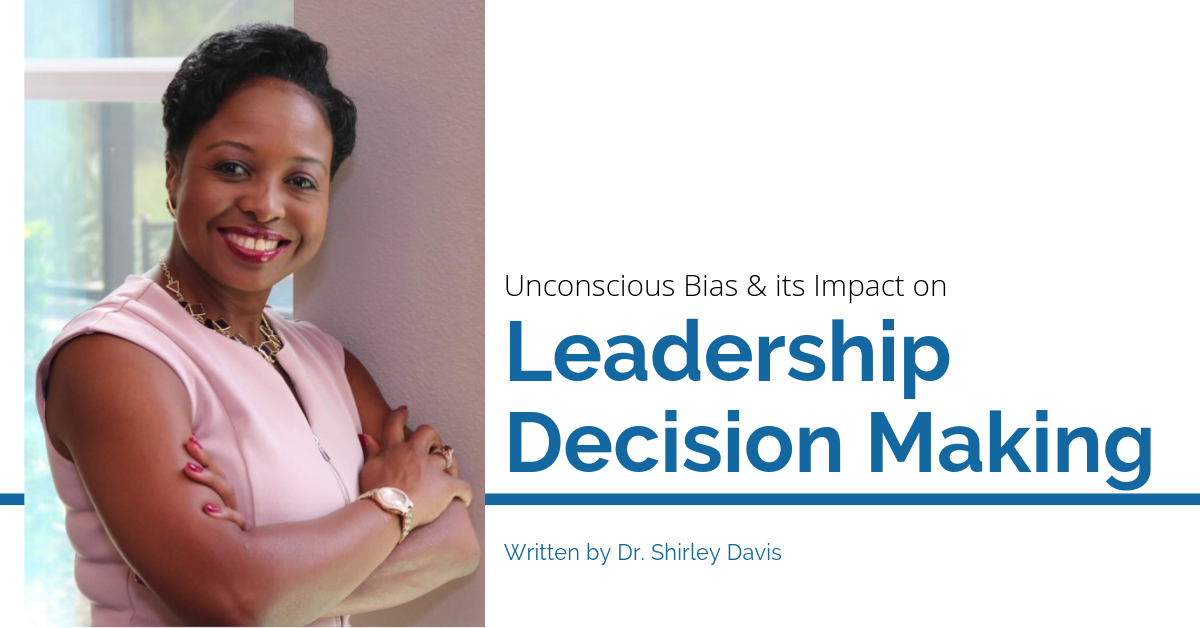
As written by Dr. Shirley Davis, Global Workforce Expert
It couldn’t be a more appropriate time to address unconscious bias at a time when we are experiencing significant demographic disruptions, polarization and divisiveness, globalization, and political discord. This two-part article attempts to introduce this topic as a leadership competency as well as an organizational strategy.
Everyone has bias. It’s a part of the human make up. We need bias to protect us from danger. Biologically we are hard-wired to prefer people who look like us, sound like us and share our interests. But when left unchecked, biases can have a negative impact in every interaction. With the vast amount of diversity that makes up our global workforce, including more women, people of color, LGBTQ, veterans, introverts and extroverts, immigrants, people with different abilities, thinking styles, and personalities, and five generations, to name a few, the level of complexity and potential conflicts that can arise from unconscious bias is sure to increase. Every day, decisions are made in the workplace — including sourcing, selection, development, pay, promotions, terminations, assigning projects, constructing teams and creating business strategy. Whether we recognize it or not, unconscious bias enters into every one of these decisions.
Having worked in Human Resources for over 20 years, I am intimately aware of how leaders think, behave, and make decisions about all aspects of the employee experience. In particular, I’ve worked with hiring managers as they reviewed candidates from diverse backgrounds and I’ve heard comments such as, “She didn’t look me in the eye or shake my hand with a firm handshake so I don’t think she’s cut out to lead this team,” or “We need a Millennial for this new project on technology,” or “This job requires a demanding schedule and I don’t think she could be available.” In other instances, leaders may assign special projects to team members who think like them, or invite only the guys to the golf outing assuming the women on the team wouldn’t be interested, or delegate administrative tasks such as note-taking or ordering lunch to the only female in the meeting. These are both overt and subtle forms of bias and both can have a negative impact on the workplace culture and perceptions of fairness.
Unconscious bias is an opinion, positive or negative, we have about a group or person. It occurs when we make spontaneous judgments about people or situations based on our past experiences, culture, background, or exposure to media. These spontaneous judgments occur within 3-5 seconds of encountering a person. The attitudes or stereotypes that develop early in life (as early as 1-6 years old), are reinforced over time, and affect our understanding, actions, and decisions in an unconscious manner.
It is not enough to become aware that everyone has bias and therefore assume we are off the hook. All leaders, particularly people managers have a responsibility to ensure that their biases don’t negatively impact employment-related decisions. They should practice mindfulness—STOP, PAUSE, and THINK before making these decisions and be more intentional about valuing diversity and learning how to LEAD across differences. They should learn how to leverage the gifts and talents of ALL employees, recognizing that great talent comes in all shapes, sizes, colors, preferences, backgrounds, and ethnicities.
The first step in managing unconscious bias in the workplace is to ensure employees understand exactly what unconscious bias is, when it happens, and the ways in which it can impact the how they work and treat each other. Educating employees formally through training and informally through multiplecommunication methods is the start of what should be a continuous learning process. Employees should also know that they are a part of shaping the culture into an inclusive, welcoming, and collaborative workplace.
Dr. Shirley Davis is a well-respected thought leader and keynote speaker on the changing global workforce and culture transformation. She is the author of “The Seat: How to Get Invited to the Table When You’re Over-Performing and Undervalued.” Learn more about her at www.drshirleydavis.com